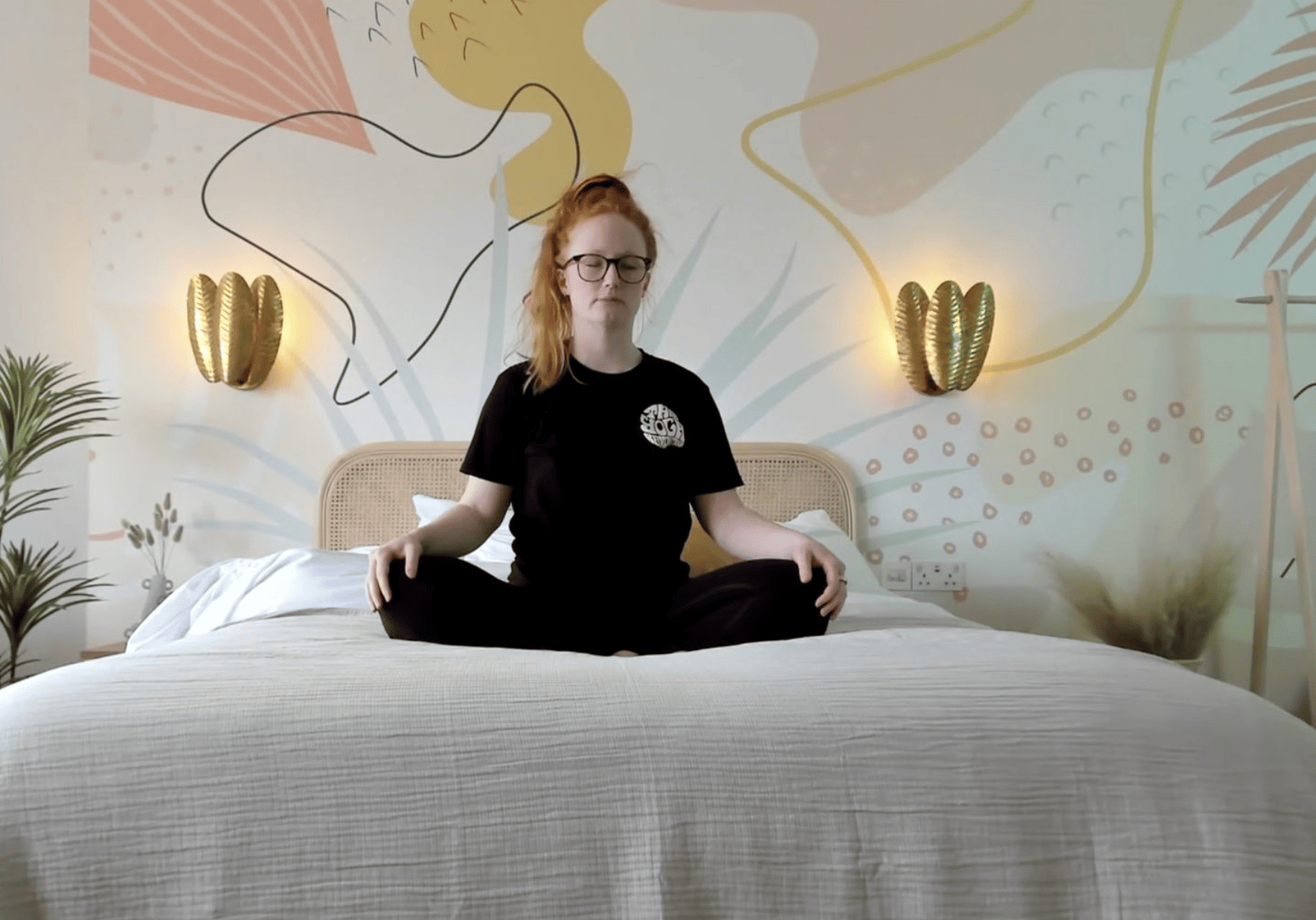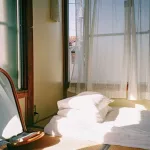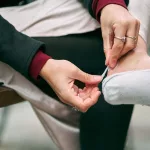A Japanese futon is a floor-oriented mattress commonly called a shikibuton. For some people it can improve sleep, though it’s not ideal for everyone.
When I first moved into my own place after leaving roommates behind, it felt like an important milestone.
Still, in California’s expensive rental scene, I couldn’t afford much beyond a studio. Even that was a stretch. In a space barely larger than a postage stamp, I had to be inventive with every inch around where I slept.
One day, torn between choosing a desk or a spot for yoga, I wondered: Do I even need a conventional bed?
What once seemed indispensable suddenly looked like wasted square footage. Thus began my hunt for a better answer.
Enter the shikibuton, sometimes called the “minimalist bed.” After sleeping on one for over two years, I may never return to a Western-style mattress. I’m hooked.

What is a shikibuton?
A shikibuton is a Japanese-style futon mattress intended to lie directly on the floor. It can be rolled or folded away when not in use, freeing up living space.
When spread out, it typically measures about 3 to 4.5 inches thick, giving the sensation of sleeping close to the ground with modest cushioning. (Imagine camping, only comfier.)
It’s akin to a Korean yo, another floor-laid futon variant.
According to Atsuko Morita, a phytotherapist and founder of the Japanese botanical wellness brand Waphyto, the shikibuton remains a cultural mainstay in Japan.
“Shikibuton is traditionally used as an ancient Japanese alternative for beds,” Morita says. “We still use them in some old traditional houses or Japanese ryokan hotels where people go to enjoy hot springs.”
Yuko Kaifu, president of JAPAN HOUSE Los Angeles, shares that perspective.
“It’s a Japanese expression of efficiency and practicality,” she says.
Benefits
If sleeping at floor level sounds daunting, consider these advantages.
Portability
A shikibuton is ideal for minimalists, studio tenants, loft inhabitants, digital nomads, tiny-house dwellers, or anyone who wants a multi-purpose bedroom.
“Because typical Japanese homes are smaller and have fewer rooms, it’s important to use the space for multiple functions,” Kaifu explains. “A futon is folded and placed into a closet during the daytime so the room can be used as a living room, dining room, study room, etc.”
Natural materials
Traditional shikibuton are hand-stitched and filled with cotton, without synthetic fibers, flame retardants, plastics, or other chemicals.
This can appeal to environmentally conscious buyers or people with sensitivities.
“In the early 20th century, some people in rural areas or those who were not wealthy slept on shikibuton stuffed with straws, which must have been rather uncomfortable,” Kaifu notes.
Sleep hygiene
Studies suggest a consistent sleep routine can help stubborn insomnia.
For me, sweeping the floor and arranging a shikibuton is a calming ritual that cues my body and mind to wind down. I no longer toss and turn as much.
Deeper sleep
A shikibuton can encourage deeper sleep by aiding circulation, says Brett Edmunds, a chiropractor in Drummoyne, Australia.
“This helps ease muscle aches and stiffness caused by too much time sitting during the day or an active lifestyle, like going to the gym, hiking, or running,” he explains.
Pain relief
At least a significant portion of Americans experience low back pain — I did, before switching to a shikibuton.
A firm yet yielding futon lets the spine align naturally without creating painful pressure points, says neurosurgeon Ali Mesiwala in Newport Beach, California.
“It’s the equivalent to an ancient form of a space-age, anti-pressure foam mattress,” he says. “A shikibuton allows the intrinsic muscles of the spine to perform necessary functions during sleep, further stabilize, and, in many cases, reduce pain.”
Kaifu highlights that adjustable thickness and firmness are important.
“Some people prefer fluffy shikibuton, while others who have a back problem may prefer flat and solid shikibuton,” she says.
Cooler experience
During hot months, a cotton shikibuton won’t trap as much heat as a bulky Western mattress.
“You can also change the material of a futon depending on the season and preference,” Kaifu says.
When it’s colder, you can layer warmer fabrics like fleece or wool.
Quiet
In minimalist communities, shikibuton owners often report there’s no creaking. I’ll simply say: it’s quiet.
Downsides
A shikibuton isn’t suitable for everyone. Consider these drawbacks before switching to floor-sleeping.
Too firm for some
People have different body shapes and thus need varying levels of mattress firmness, explains chiropractor Jordan Duncan in Silverdale, Washington.
“People with straighter spines and angular body types tend to do better with firmer mattresses, compared to those with larger spinal curves,” he says.
“Those with larger spinal curves may find it less comfortable because the hard surface doesn’t provide adequate support, and may allow your lower back to flatten during sleep,” he adds.
People who are pregnant, injured, or have mobility challenges should consult their doctor before trying a shikibuton.
Pressure for side sleepers
Side sleepers may find a shikibuton unsuitable, says Steven Knauf, executive director of chiropractic and compliance at The Joint in Scottsdale, Arizona.
“If you sleep on your side, your mattress will usually need some ‘give’ to accommodate your shoulders and hips,” he notes. “Firm mattresses may put too much pressure on those areas, causing pain and restless sleep.”
Low to the ground
One advantage of a shikibuton is that no bed frame is necessary — but that also means it sits very low.
“People who have back pain may find it more difficult to stand up from shikibuton, as it’s spread on the floor,” Kaifu says. “It’s easier to do so from a bed, as you can just slide down from it.”
If getting up from or sitting on the floor is a challenge for you, a shikibuton may not be appropriate.
Adjustment period
My first night on a shikibuton was the deepest sleep I’d had in years. Still, some people report needing up to three nights to adapt to sleeping so near the floor.
You might want to keep your old mattress until you’ve had a few days off to trial the shikibuton — easing into the change reduces risk.
Weight
A queen-size shikibuton can weigh roughly 40 to 50 pounds.
The combination of its length and weight may make daily rolling and storing difficult for some people.
Cost
A high-quality queen shikibuton typically costs between $300 and $500.
Delayed gratification
When the mood to nap hits, there’s no instant bed to flop into — you need to unroll it first.
How to use it
In Japan, a shikibuton is commonly laid on tatami mats, which are straw-based woven mats. If you don’t have tatami, you can place the futon directly on a clean floor.
Setup
- Sweep the area where you plan to sleep.
- Lay down tatami mats if you want the traditional setup.
- Unroll the shikibuton.
- Add sheets, blankets, and pillows.
- Climb in and get some rest.
Storage
When unused, it’s important to lift the shikibuton off the floor to prevent mold from trapped moisture (from sweat while sleeping).
To store it:
- Remove bedding.
- Fold the futon in thirds or roll it and fasten a strap.
- Keep it in a breathable closet or near a sunlit window.
How to clean a shikibuton
In Japan, people often clip a shikibuton to their balcony railing and air it during daylight hours.
“The climate in Japan tends to be humid, and it works well to dry it in the sun from time to time,” Kaifu says. “It feels so good at night to lie down on a shikibuton that was dried in the sunlight or heat during the day.
The sun helps dry the fabric and disinfects it from bacteria or dust mites. If you air your futon regularly by moving it each day, you should be fine.
You may also want to sprinkle your shikibuton with baking soda and vacuum it off monthly, particularly if you live in a humid climate.
Always follow the manufacturer’s care guidelines, and don’t attempt machine-washing unless the label explicitly permits it.
This instructional video is a helpful resource.
Where to find one
There are many online retailers selling shikibuton.
Look for models made from natural fibers, ideally organic cotton or wool, and under 5 inches thick.
I purchased my full-size shikibuton from Relaxation Products on Etsy.
Other vendors with positive feedback include:
Let’s recap
With a large portion of life spent asleep, your choice of sleeping surface matters.
A shikibuton can be an excellent option for those seeking a space-saving bed or a way to support spinal health naturally.
Consult a physician, orthopedist, or chiropractor to determine if a shikibuton is an appropriate choice for your needs.


















Leave a Reply
You must be logged in to post a comment.